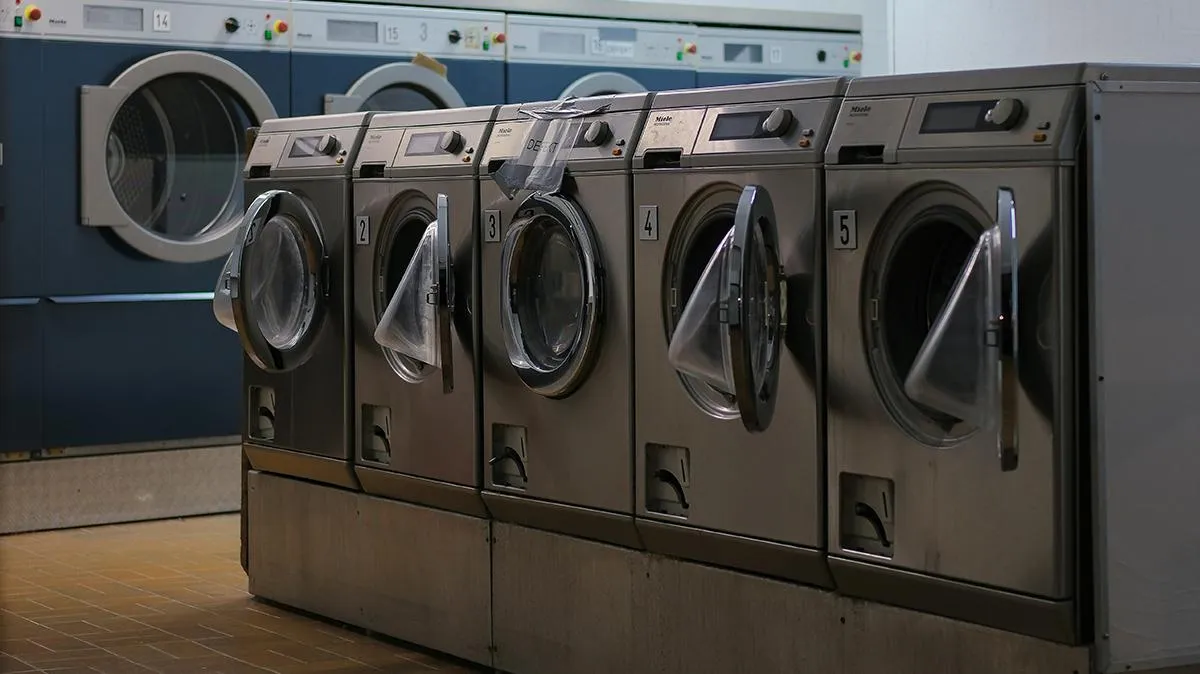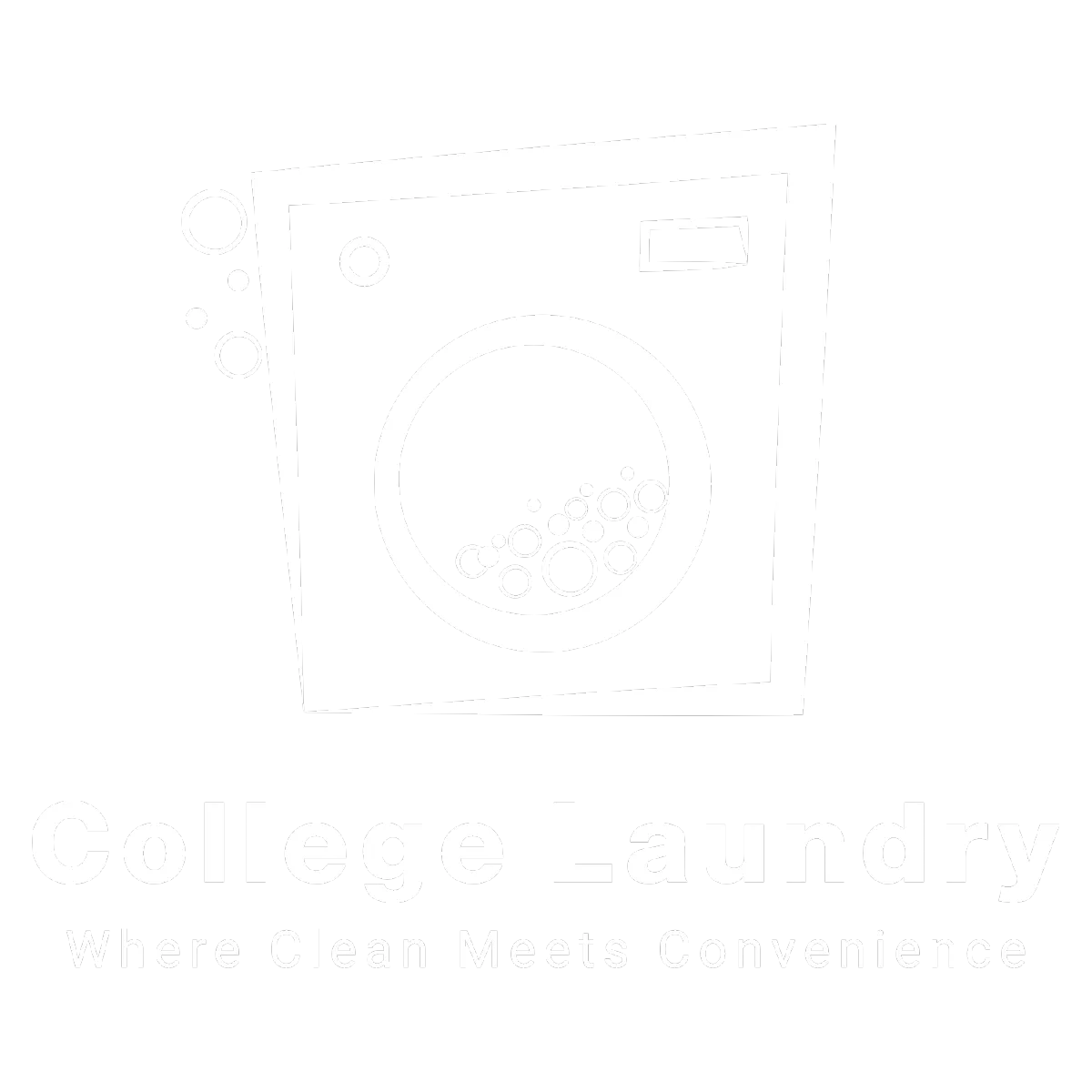
Common Laundry Mistakes to Avoid at Laundromats
Doing laundry at a laundromat can be convenient and efficient, but many people make costly mistakes that damage their clothes or waste time and money. At College Laundry, we've seen it all – from shrunken sweaters to pink socks that used to be white. Avoiding these common laundromat mistakes will save you frustration and keep your clothes looking their best.
Temperature Troubles: Getting the Heat Right
Have a look at the following mistakes:
The Hot Water Myth
One of the biggest mistakes people make is assuming that hotter water equals cleaner clothes. Many residents think that cranking up the temperature will eliminate odors and stains more effectively, but this approach often backfires.
Cold water works for 90% of your laundry loads unless you're dealing with heavily soiled items or grease stains. Hot water can actually set certain stains permanently and cause unnecessary shrinkage and fading.
Proper Temperature Guidelines
Cold water (60-80°F): Perfect for darks, colors, delicates, and lightly soiled items
Warm water (90-110°F): Good for moderately soiled clothes and permanent press fabrics
Hot water (130°F+): Reserve for whites, heavily soiled items, and sanitizing needs
Dryer Heat Disasters
The same principle applies to drying. Many people assume maximum heat will speed up the process, but high heat settings can shrink natural fibers, damage elastic, and cause permanent wrinkles. Most laundromats in Charleston, SC, feature energy-efficient dryers that work effectively on medium heat settings while protecting your garments.
Sorting Sins: Why Proper Separation Matters
Have a look at the following mistakes:
Color Catastrophes
Nothing ruins a laundry day like pulling out a load of newly pink underwear because you threw a red shirt in with your whites. Proper sorting prevents color bleeding and ensures each fabric type gets the care it needs.
Essential sorting categories:
Whites: Pure white items that can handle bleach
Light colors: Pastels and light grays
Dark colors: Navy, black, dark brown, and deep colors
Reds: Keep separate, especially new red items
Delicates: Items requiring gentle cycles
Fabric Weight Mistakes
Mixing heavy items like jeans and towels with lightweight fabrics creates uneven washing and drying. Heavy items need more agitation and longer drying times, while delicate fabrics can be damaged by the aggressive action needed for heavier materials.
Work Clothes and Personal Items
Never wash work uniforms, especially those exposed to chemicals, grease, or other contaminants, with your regular clothes or towels. These items need special attention and should be washed separately to prevent cross-contamination.
Pocket Problems: The Pre-Wash Inspection
Have a look at the following mistakes:
The Pen Disaster
Few things are more frustrating than discovering ink stains throughout an entire load because you forgot to check your pockets. Always inspect every pocket before loading clothes into the laundromat machines.
Common pocket culprits:
Pens and markers
Tissues (which shred and stick to everything)
Coins and keys (which can damage machines)
Gum and candy
USB drives and earbuds
Receipts and business cards
Machine Inspection Protocol
Before loading your clothes, check the bottom of the washing machine drum. Previous users sometimes leave items behind, and you don't want someone else's forgotten sock or tissue affecting your clean laundry.
Detergent Dilemmas: Less is Often More
Have a look at the following mistakes:
Overloading with Soap
More detergent doesn't mean cleaner clothes. Using too much soap can leave residue on your garments, making them feel stiff and dingy. It can also cause excessive suds that prevent proper agitation and rinsing.
Proper detergent amounts:
Standard top-loader: 1-2 tablespoons for regular loads
High-efficiency machines: Even less – follow package directions carefully
Heavily soiled items: Pre-treat stains rather than adding more detergent
Wrong Detergent Types
Using regular detergent in high-efficiency machines can cause problems. Many laundromats in Charleston, SC, feature HE machines that require low-suds formulas. Check the machine type before adding detergent.
Timing and Frequency Errors
Have a look at the following mistakes:
Overwashing Damage
Not every item needs washing after each wear. Frequent laundering, especially hot water washing, and high-heat drying break down fibers and shorten garment life.
Washing frequency guidelines:
Underwear and socks: After each wear
T-shirts and blouses: After 1-2 years
Jeans: After 4-5 wears (unless visibly dirty)
Sweaters: After 3-4 years
Coats and jackets: Seasonally or when soiled
Leaving Clothes Too Long
Don't abandon your laundry in the laundromat machines. Leaving wet clothes in washers promotes mildew and odors, while leaving clothes in dryers causes wrinkles and may result in your items being removed by staff or other customers.
Load Size Mistakes
Have a look at the following mistakes:
Overpacking Machines
Stuffing too many clothes into one machine prevents proper water circulation and agitation. For clothes to be cleaned thoroughly, they need enough space to move around. When a washer is overloaded, garments may not rinse properly, often leaving behind detergent residue.
Proper loading guidelines:
Fill machines only 2/3 full
Large items like comforters need extra space
Heavy items like towels should be distributed evenly
Underpacking Waste
Running tiny loads wastes water, energy, and money. Combine smaller loads when possible, but maintain proper sorting principles.
Stain Treatment Mistakes
Have a look at the following mistakes:
Setting Stains with Heat
Never put stained items in the dryer before confirming the stain is completely gone. Heat sets stains permanently, making them nearly impossible to remove later.
Wrong Stain Treatments
Different stains require different approaches:
Stains of blood and sweat: Cold water and enzyme detergents
Oil-based stains: Pre-treat with dish soap
Tannin stains (coffee, tea): Rinse with cold water immediately
Waiting Too Long
Address stains as quickly as possible. Stains are easier to remove when treated quickly. If immediate treatment isn’t possible, rinsing the area with cold water can help prevent it from setting.
Machine Selection Errors
Have a look at the following mistakes:
Ignoring Machine Condition
Not all laundromat machines are created equal. Before loading your clothes, check for:
Clean drum interior
Functioning door seals
Proper water levels
Strange odors or residue
Wrong Cycle Selection
Modern laundromats offer various cycle options. Choose the appropriate cycle for your load:
Normal/Regular: Everyday cotton items
Permanent Press: Synthetic blends and wrinkle-prone items
Delicate/Gentle: Fragile fabrics and hand-wash items
Heavy Duty: Heavily soiled work clothes and sturdy fabrics
Safety and Etiquette Mistakes
Have a look at the following mistakes:
Leaving Valuables Unattended
Never leave wallets, phones, or other valuables unattended in laundromats. While most facilities are safe, it's better to keep important items with you.
Ignoring Laundromat Rules
Each facility has specific rules about:
Operating hours
Payment methods accepted
Maximum load sizes
Prohibited items
Poor Time Management
Arrive with realistic time expectations. Washing and drying can take 2-3 hours in total. Bring entertainment or plan other activities nearby rather than making multiple trips.
Professional Alternatives
You can look for these professional alternatives:
When to Consider Pickup and Delivery
If you're consistently making these mistakes or simply don't have time for proper laundry care, consider professional laundry services. College Laundry offers convenient pickup and delivery throughout Charleston, ensuring your clothes receive expert care without the hassle.
Commercial Laundry Benefits
For businesses, restaurants, and other commercial clients, professional laundry services eliminate the risk of employee mistakes and ensure consistent results that reflect positively on your business.
Making Laundry Less of a Chore
Doing laundry doesn't have to be stressful or result in damaged clothes. By avoiding these common mistakes, you'll save time, money, and frustration while keeping your garments looking their best.
Charleston’s coastal climate and humid conditions can make laundry care a bit more challenging, so it’s important to tailor your washing routine to suit the environment. When in doubt, opt for cooler water temperatures and gentler cycles to help preserve your clothes.
And when life gets hectic, remember that professional laundromats in Charleston, SC, like College Laundry, are here to take the load off your hands. We’ll handle your laundry with care so you can enjoy more time doing what matters most.

